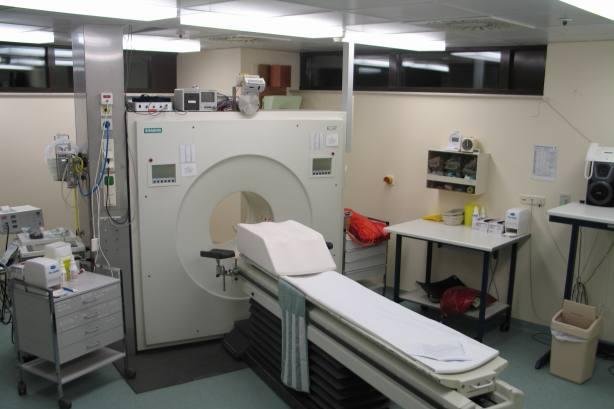Researchers found PET scans can reveal stress and inflammation in the heart that is linked to Parkinson's disease. Photo by
Jens Maus/Wikimedia Commons
July 16 (UPI) -- Researchers found a possible treatment for heart damage cause by Parkinson's, after finding that an imaging method could reveal and allow for treatment evaluation.
A way to track the mechanisms that cause damage to heart nerve cells was tested in rhesus macaque monkeys' human-like nervous system and heart. The findings were published Friday in the journal npj Parkinson's Disease.
About 60 percent of patients with Parkinson's already have serious damage to the heart's connections to the sympathetic nervous system, the researchers said.
"This neural degeneration in the heart means patients' bodies are less prepared to respond to stress and to simple changes like standing up," Dr. Marina Emborg, a University of Wisconsin-Madison professor of medical physics and Parkinson's researcher at the Wisconsin National Primate Research Center, said in a press release. "They have increased risk for fatigue, fainting and falling that can cause injury and complicate other symptoms of the disease."
For the study, the researchers gave 10 rhesus macaque monkeys doses of a neurotoxin that damaged the nerves in their hearts, similar to the effect of Parkinson's disease on humans.
Before and after the test, the monkeys underwent positron emission tomography, or PET, scans to track chemical processes in the body using radioactive tracers.
"We know there is damage in the heart in Parkinson's, but we haven't been able to look at exactly what's causing it," lead author Jeanette Metzger, a graduate student, said. "Now we can visualize in detail where inflammation and oxidative stress are happening in the heart, and how that relates to how Parkinson's patients lose those neuronal connections in the heart."
Three tracers, called radioligands, mapped three things in the left ventricle, which is the strongest pumping chamber: where nerves extend into the heart muscle were damaged, where the heart tissue experienced the most inflammation and where the most oxidative stress existed.
The researchers said radioligands can also be used to test the effectiveness of new treatments to protect the neurons that regulate heart activity.
Half the monkeys were given pioglitazone, which has shown promise at protecting central nervous system cells from inflammation and oxidative stress. Pioglitazone, with the brand name Actos, has been prescribed to treat diabetes.
"The recovery of nerve function is much greater in the pioglitazone-treated animals," Emborg said. "And what's interesting is this method allows us to identify very specifically the differences the treatment made -- separately for inflammation and for oxidative stress -- across the heart."
Metzger believes humans could benefit from radioligand scans before other symptoms surface or progress.
"Much of the neural degeneration that occurs in the heart can happen very early in the course of the disease," Metzger said. "A lot of patients have problems with their heart before they have motor problems. While these PET techniques potentially provide a way to test drugs, they may also be used as tools to understand the mechanisms underlying early heart nerve damage."
The researchers also believe other disorders with damages to nerves in the heart -- including heart attacks and diabetes -- could benefit from the new method.















